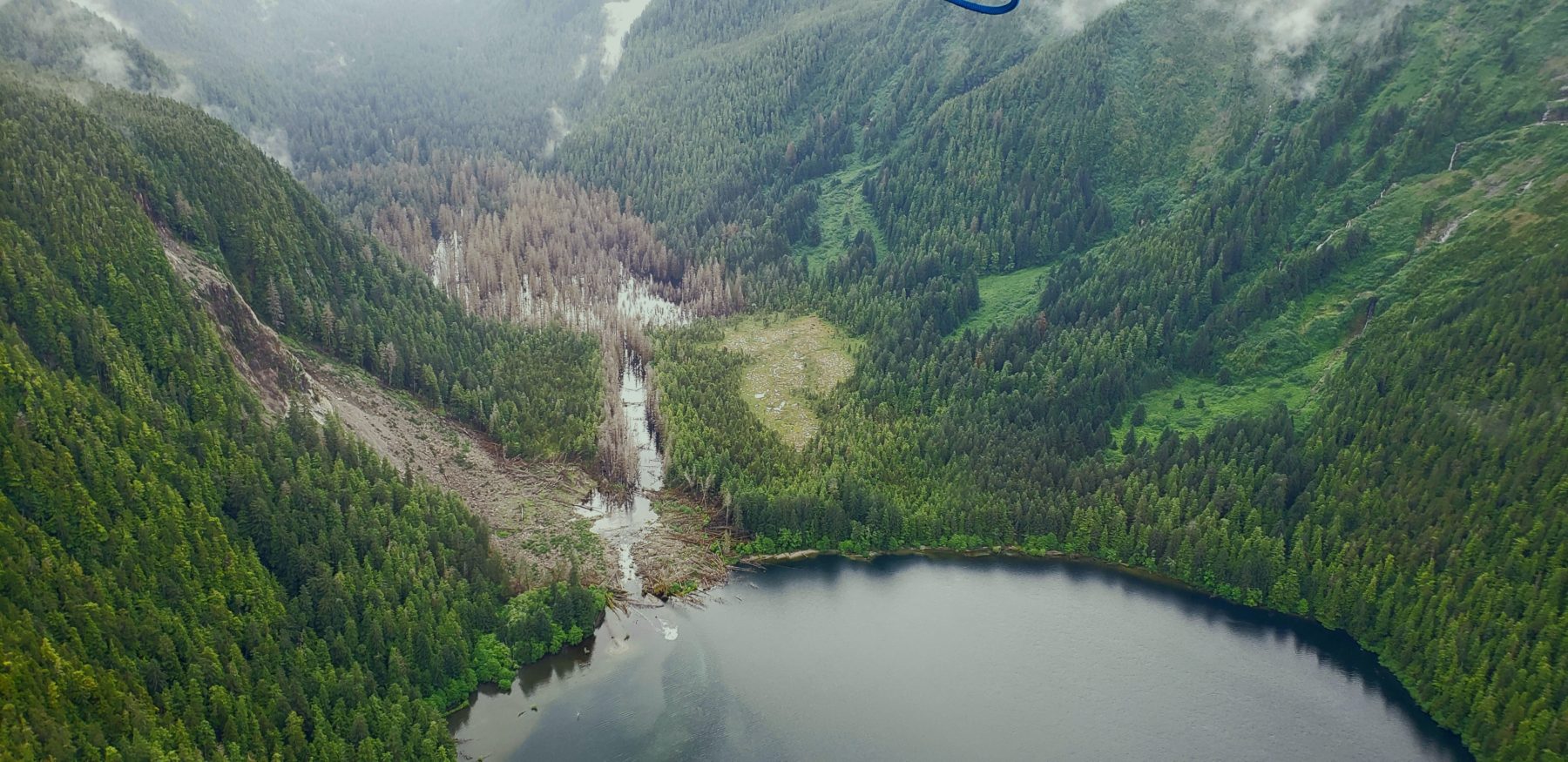
On August 18, 2015, rapid, heavy rain triggered more than 40 landslides on Baranof and Chichagof Islands. The biggest slide was on Harbor Mountain in Sitka and stretched 1,200 feet. It killed three men and caused massive damage to property on Kramer Avenue. The community, led by the Sitka Fire Department, came together to support the search for lost men, clear roads, and repair damaged property. In response to this tragic disaster, the Sitka Sound Science Center helped gather a team of geologic and climate experts and volunteers from Alaska and around the country, creating the Sitka GeoTask Force.
In response to the landslide events in 2015, Sitka has become a home for innovative landslide research. Together with multiple non-profits, state agencies, and educational institutions, we’ve worked toward the implementation of a landslide warning system. Additionally, a collaborative project with multiple universities worked to understand the role of landslides in ecosystem dynamics.
The 2017 Landslide Workshop
In 2017, the Sitka Sound Science Center, at the request of the City and Borough of Sitka, convened a 3-day workshop with a group of landslide experts from around the country to discuss the possibility for a Landslide Early Warning System in Sitka. Scientists from the United States Forest Service, Alaska Division of Geological and Geophysical Surveys, Sitka Tribe of Alaska, National Park Service, United States Geological Survey, University of Delaware Disaster Hazard Program, Shannon & Wilson, and the National Weather Service rolled up their sleeves and worked on a plan to move debris landslide science forward. Landslides in Sitka are rapid, low frequency high impact events, making early warning systems challenging.
Check out all of the landslide research happening here using the menu selections.